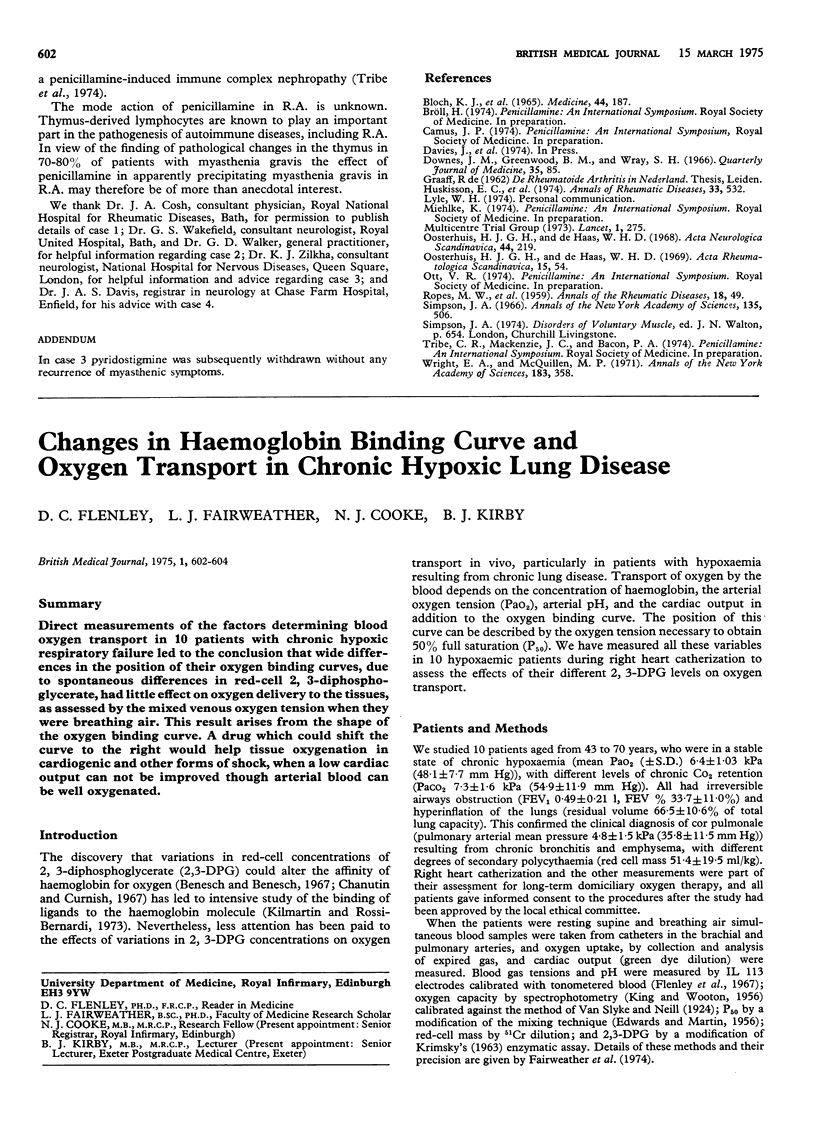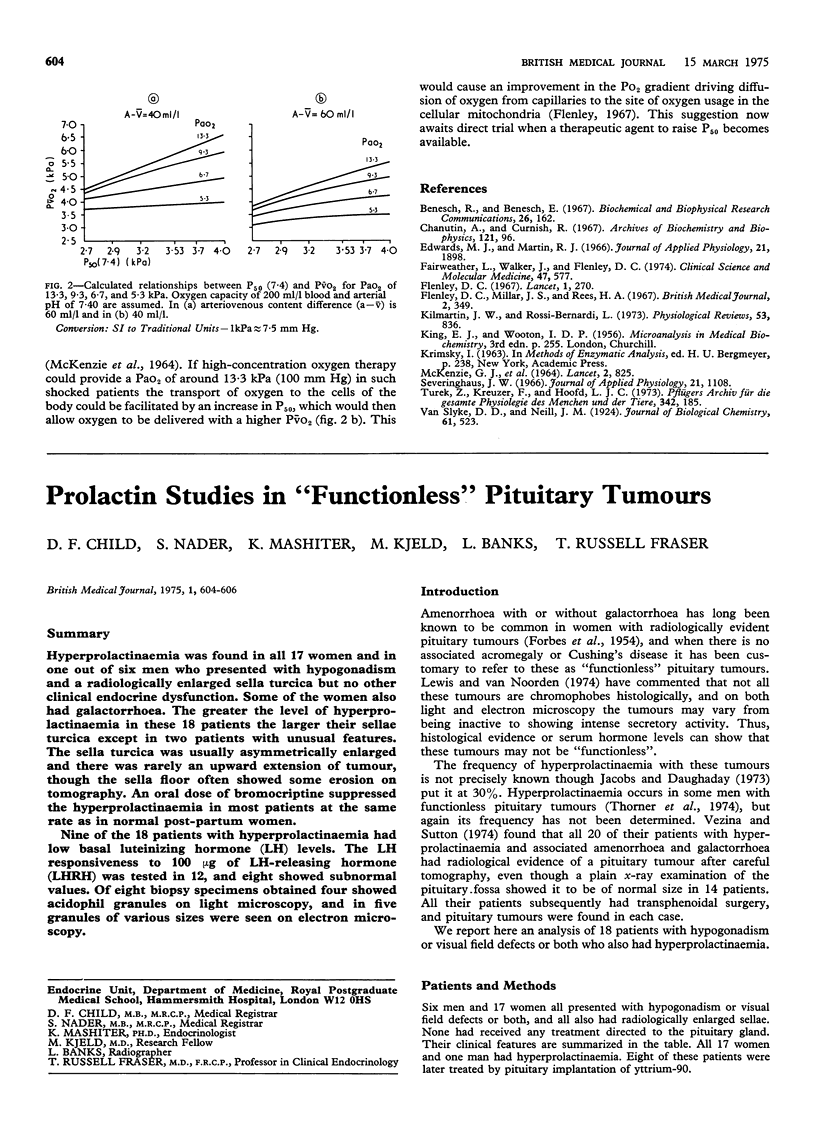Abstract
Direct measurements of the factors determining blood oxygen transport in 10 patients with chronic hypoxic respiratory failure led to the conclusion that wide differences in the position of their oxygen binding curves, due to spontaneous differences in red-cell 2, 3-diphosphoglycerate, had little effect on oxygen delivery to the tissues, as assessed by the mixed venous oxygen tension when they were breathing air. This result arises from the shape of the oxygen binding curve. A drug which could shift the curve to the right would help tissue oxygenation in cardiogenic and other forms of shock, when a low cardiac output can not be improved though arterial blood can be well oxygenated.
Full text
PDF


Selected References
These references are in PubMed. This may not be the complete list of references from this article.
- Benesch R., Benesch R. E. The effect of organic phosphates from the human erythrocyte on the allosteric properties of hemoglobin. Biochem Biophys Res Commun. 1967 Jan 23;26(2):162–167. doi: 10.1016/0006-291x(67)90228-8. [DOI] [PubMed] [Google Scholar]
- Chanutin A., Curnish R. R. Effect of organic and inorganic phosphates on the oxygen equilibrium of human erythrocytes. Arch Biochem Biophys. 1967 Jul;121(1):96–102. doi: 10.1016/0003-9861(67)90013-6. [DOI] [PubMed] [Google Scholar]
- Edwards M. J., Martin R. J. Mixing technique for the oxygen-hemoglobin equilibrium and Bohr effect. J Appl Physiol. 1966 Nov;21(6):1898–1902. doi: 10.1152/jappl.1966.21.6.1898. [DOI] [PubMed] [Google Scholar]
- Fairweather L. J., Walker J., Flenley D. C. 2,3-diphosphoglycerate concentrations and the dissociation of oxyhaemoglobin in ventilatory failure. Clin Sci Mol Med. 1974 Dec;47(6):577–588. doi: 10.1042/cs0470577. [DOI] [PubMed] [Google Scholar]
- Flenley D. C., Millar J. S., Rees H. A. Accuracy of oxygen and carbon dioxide electrodes. Br Med J. 1967 May 6;2(5548):349–352. doi: 10.1136/bmj.2.5548.349. [DOI] [PMC free article] [PubMed] [Google Scholar]
- Flenley D. C. The rationale of oxygen therapy. Lancet. 1967 Feb 4;1(7484):270–273. doi: 10.1016/s0140-6736(67)91325-6. [DOI] [PubMed] [Google Scholar]
- Kilmartin J. V., Rossi-Bernardi L. Interaction of hemoglobin with hydrogen ions, carbon dioxide, and organic phosphates. Physiol Rev. 1973 Oct;53(4):836–890. doi: 10.1152/physrev.1973.53.4.836. [DOI] [PubMed] [Google Scholar]
- MACKENZIE G. J., FLENLEY D. C., TAYLOR S. H., MCDONALD A. H., STAUNTON H. P., DONALD K. W. CIRCULATORY AND RESPIRATORY STUDIES IN MYOCARDIAL INFARCTION AND CARDIOGENIC SHOCK. Lancet. 1964 Oct 17;2(7364):825–832. doi: 10.1016/s0140-6736(64)90684-1. [DOI] [PubMed] [Google Scholar]
- Turek Z., Kreuzer F., Hoofd L. J. Advantage or disadvantage of a decrease of blood oxygen affinity for tissue oxygen supply at hypoxia. A theoretical study comparing man and rat. Pflugers Arch. 1973 Aug 27;342(3):185–197. doi: 10.1007/BF00591367. [DOI] [PubMed] [Google Scholar]


